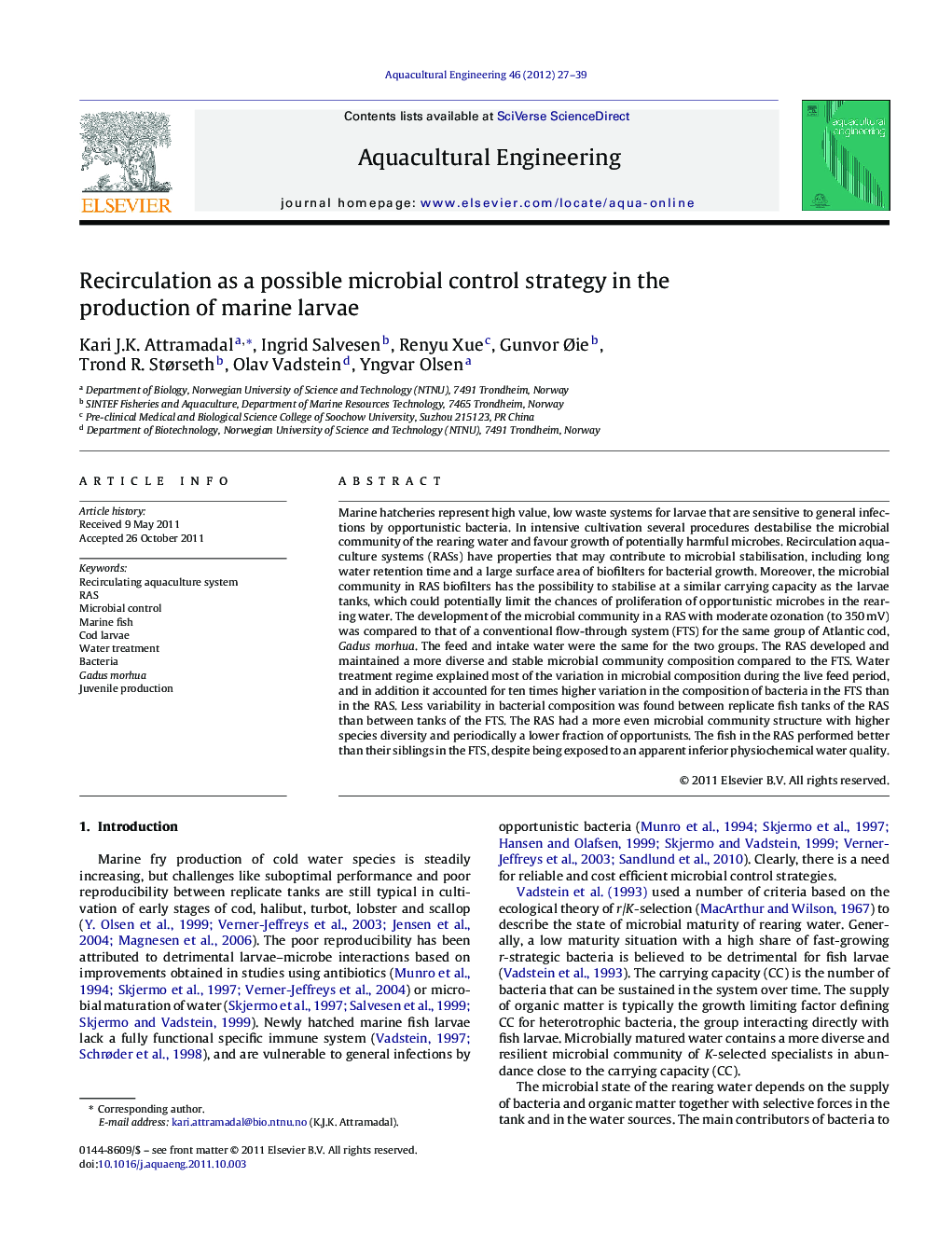| کد مقاله | کد نشریه | سال انتشار | مقاله انگلیسی | نسخه تمام متن |
|---|---|---|---|---|
| 4527296 | 1625724 | 2012 | 13 صفحه PDF | دانلود رایگان |

Marine hatcheries represent high value, low waste systems for larvae that are sensitive to general infections by opportunistic bacteria. In intensive cultivation several procedures destabilise the microbial community of the rearing water and favour growth of potentially harmful microbes. Recirculation aquaculture systems (RASs) have properties that may contribute to microbial stabilisation, including long water retention time and a large surface area of biofilters for bacterial growth. Moreover, the microbial community in RAS biofilters has the possibility to stabilise at a similar carrying capacity as the larvae tanks, which could potentially limit the chances of proliferation of opportunistic microbes in the rearing water. The development of the microbial community in a RAS with moderate ozonation (to 350 mV) was compared to that of a conventional flow-through system (FTS) for the same group of Atlantic cod, Gadus morhua. The feed and intake water were the same for the two groups. The RAS developed and maintained a more diverse and stable microbial community composition compared to the FTS. Water treatment regime explained most of the variation in microbial composition during the live feed period, and in addition it accounted for ten times higher variation in the composition of bacteria in the FTS than in the RAS. Less variability in bacterial composition was found between replicate fish tanks of the RAS than between tanks of the FTS. The RAS had a more even microbial community structure with higher species diversity and periodically a lower fraction of opportunists. The fish in the RAS performed better than their siblings in the FTS, despite being exposed to an apparent inferior physiochemical water quality.
► We compared the development of the microbial community in a RAS with moderate ozonation to a flow-through system.
► The RAS was suggested to select for a more stable and beneficial microbial community for the fish larvae.
► Water treatment regime explained most of the variation in microbial composition during the live feed period.
► The RAS maintained a more diverse and stable microbial community composition compared to the FTS.
► The RAS had higher microbial species diversity and periodically a lower fraction of opportunists.
Journal: Aquacultural Engineering - Volume 46, January 2012, Pages 27–39